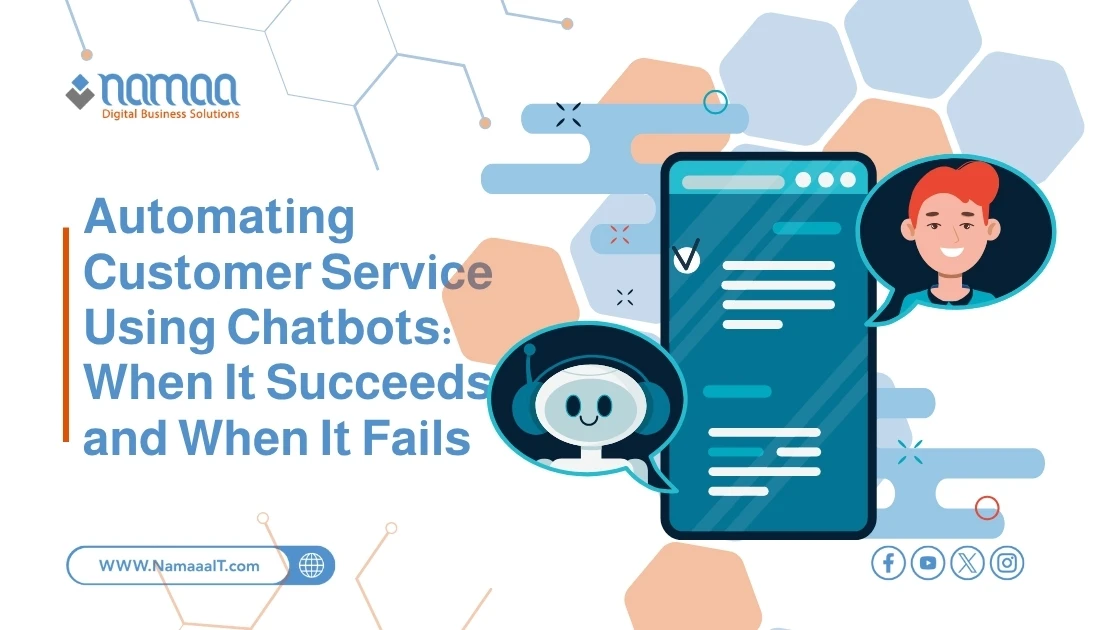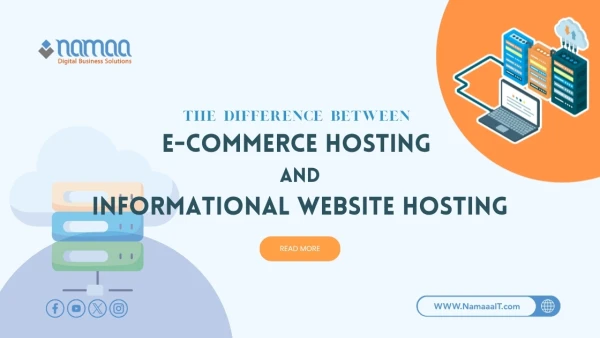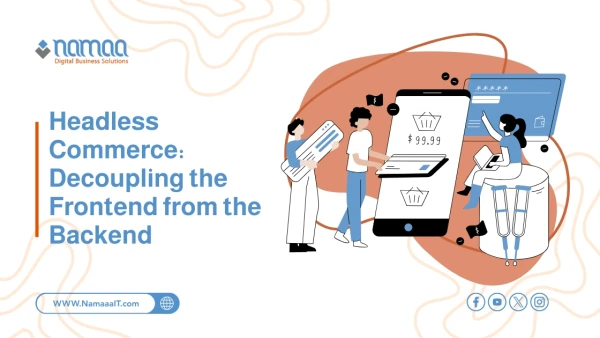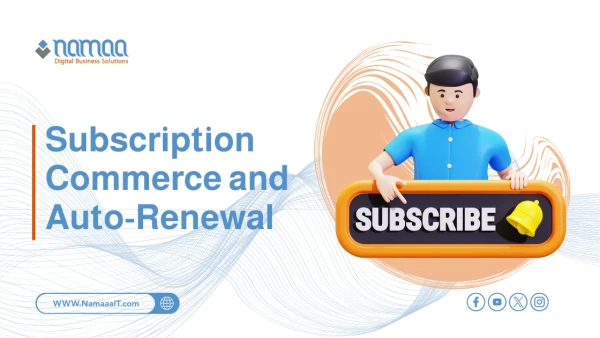In the fast-paced business landscape and with rising customer expectations, automating customer service using chatbots has become a popular choice among companies aiming to reduce costs and improve responsiveness. With just a click, users can receive instant answers without waiting for a staff member or filling out traditional forms. However, this automation isn’t always successful. Sometimes, the chatbot turns from a helpful tool into a barrier that disrupts communication and erodes customer trust. Success isn’t solely about the technology—it’s about how it’s integrated, the limits of its use, and understanding the nature of human dialogue it seeks to simulate. So, when are chatbots an effective option? And when do they become a burden?
What is Customer Service Automation?
Customer service automation refers to using digital technologies—particularly chatbots—to provide support and assistance to customers without direct human involvement. This goes beyond automated chat programs and includes auto-reply email systems, voice response bots, and smart integrations between applications that enable instant solutions. The main goal is to speed up responses, reduce the workload on support teams, and improve operational efficiency.
With advancements in AI, automation has evolved far beyond pre-programmed replies. Modern systems can analyze user inquiries, infer needs, and offer solutions or suggestions without waiting for a human agent. This not only saves time but also helps minimize human errors and boosts customer satisfaction—especially in routine, repetitive scenarios.
However, automation does not mean completely eliminating the human element. It is a complement—not a replacement—for human support. Success in automation lies in its ability to deliver prompt, clear, and effective support without making the user feel trapped in a closed loop or talking to an uncomprehending machine. Therefore, customer service automation is a blend of technology and organizational intelligence—it relies on knowing when to activate systems and when to involve humans.
When Are Chatbots Effective in Customer Service?
Chatbots are most effective when used for clear, repetitive tasks that don’t require complex thinking or decisions. Examples include: checking order status, tracking a shipment, resetting a password, or providing basic product or service information. In these cases, bots can deliver fast, accurate responses within seconds—saving customers time and easing the support team's workload.
They are also highly effective when properly integrated within a company's digital infrastructure—connected to databases, CRM systems, and internal portals. This allows them to access real-time information and respond accurately. For instance, a chatbot linked to an accounting system can instantly provide a customer with their invoice balance or confirm that a recent issue has been resolved.
Studies show that providing 24/7 instant support through chatbots can increase customer satisfaction rates by up to 70%, especially for global companies operating across time zones. Effectiveness also improves when bots are trained to understand different dialects and industry-specific terminology.
However, it’s important to note that chatbot effectiveness is limited. When used outside their scope—in complex inquiries or emotionally sensitive situations—they often fail to deliver a satisfactory service.
Why Do Chatbots Sometimes Fail to Deliver Quality Service?
Despite their benefits, chatbots can fail to provide exceptional service due to several common issues:
- Poor understanding of natural language: Bots that rely on basic rules or rigid scripts often struggle with unexpected questions or phrasing outside their programmed scenarios, resulting in unhelpful—or worse, incorrect—responses.
- Lack of integration with company systems: Many bots are deployed without being connected to customer databases, order histories, or internal systems, so they end up offering generic, impersonal answers. Today's customers expect personalized service—not canned responses. Failing to provide that erodes trust and increases frustration.
- No option to escalate to a human agent: The absence of a clear path to human assistance is a critical error. Customers expect a way out of automated loops—especially if their issue remains unresolved. Forcing users to stay within a closed system of scripted replies damages the company's reputation and increases complaints.
- Lack of maintenance and updates: Many companies launch a chatbot and then neglect it—leaving its database outdated and untrained to handle new questions. Over time, it becomes obsolete and ineffective. So, success depends not just on launch, but on continuous monitoring and improvement based on user interactions.
How AI Enhances Chatbot Performance
Artificial Intelligence plays a crucial role in chatbot development—not only by improving comprehension but also through continuous learning, personalization, and enhancing the overall user experience. Key technologies include:
- Natural Language Processing (NLP): This allows bots to understand human language in its various forms, including spelling errors and regional dialects, making them more flexible in handling diverse users.
- Learning from previous conversations: Through machine learning, bots can identify patterns and common queries, improving autonomously over time without human intervention. Every interaction becomes a learning opportunity—not just a completed task.
- Smart recommendations based on user data: For example, if a customer previously contacted support about a specific issue, the bot can retrieve that data and provide an updated solution. It can also anticipate questions based on the user’s behavior, such as website activity or purchase history.
- Sentiment analysis: Perhaps most importantly, AI enables bots to detect emotional cues—such as frustration or anger—from a user’s tone, and automatically escalate the interaction to a human agent. These capabilities make bots feel more human—not just machines parroting instructions.
? Learn more: AI-Powered Search Engines
When is Human Intervention Essential in Automated Customer Service?
Despite major advancements in chatbot technology and customer service automation, human involvement remains essential in certain cases where automation lacks efficiency or empathy. These include:
- Complex complaints requiring flexible thinking or special handling: For example, a customer who had a unique negative experience and is seeking compensation or immediate resolution. Automated replies may seem cold or indifferent, worsening the customer’s frustration.
- Unclear or emotionally charged language: Bots often fail to understand vague or emotionally mixed messages, making it difficult to deliver appropriate responses.
- Sensitive sectors like healthcare or finance: Here, reliance on automation alone is risky due to the high cost of errors. Human oversight is critical.
- Technical crises or security threats: These situations require swift decision-making that exceeds a bot’s capacity.
Practically, every automated support system should include a clear, easy-to-access option to reach a human agent. This doesn’t reduce the value of automation—it enhances it through role integration. Users feel more at ease when they know a real person is available if needed. Ultimately, technology serves humanity—but it cannot fully replace it when trust, flexibility, and empathy make the difference.
Successful Examples of Chatbots in Customer Service
Several global companies have achieved remarkable success using AI-powered chatbots to enhance customer service. Notable examples include:
- Klarna:
The fintech company Klarna developed an AI-powered chatbot in collaboration with OpenAI. This bot handled around 66% of customer inquiries—equivalent to the work of 700 full-time agents. In its first month, it conducted 2.3 million conversations, boosting company profits by $40 million annually. It supports 35 languages, serves 23 countries, and cut response times from 11 minutes to under 2. - Sephora:
Sephora uses the "Sephora Virtual Artist" chatbot to offer personalized recommendations based on skin type and preferences. It allows users to virtually try products via photo analysis, boosting engagement and sales. - Domino’s Pizza:
Domino’s launched a chatbot named "Dom" that allows customers to order pizza via chat. It offers suggestions based on past orders and streamlines the ordering process, enhancing customer experience and operational efficiency. - H&M:
H&M’s in-app chatbot delivers a personalized shopping experience by asking about users’ fashion preferences and offering tailored recommendations, increasing purchase likelihood and satisfaction.
These examples show how AI-powered chatbots can improve customer experiences, reduce costs, and increase operational efficiency.
Frequently Asked Questions (FAQs)
1. Can chatbots be used for sales, not just customer service?
Yes, they can offer product recommendations, display items, and even complete purchases within the conversation.
2. What’s the difference between rule-based and AI-powered chatbots?
Rule-based bots follow fixed scripts, while AI bots learn and interact intelligently based on natural language and conversation context.
3. Can chatbots be integrated with social media platforms?
Yes, they can work with WhatsApp, Facebook Messenger, Instagram, and others to offer direct support within those channels.
4. How long does it take to build an effective chatbot?
It depends on complexity, but typically takes from a few weeks to several months—especially if integration with internal systems is needed.
5. Do chatbots affect job opportunities in customer service?
They reduce repetitive tasks but don’t eliminate human roles—instead, they redirect human efforts to more complex, interactive tasks.









